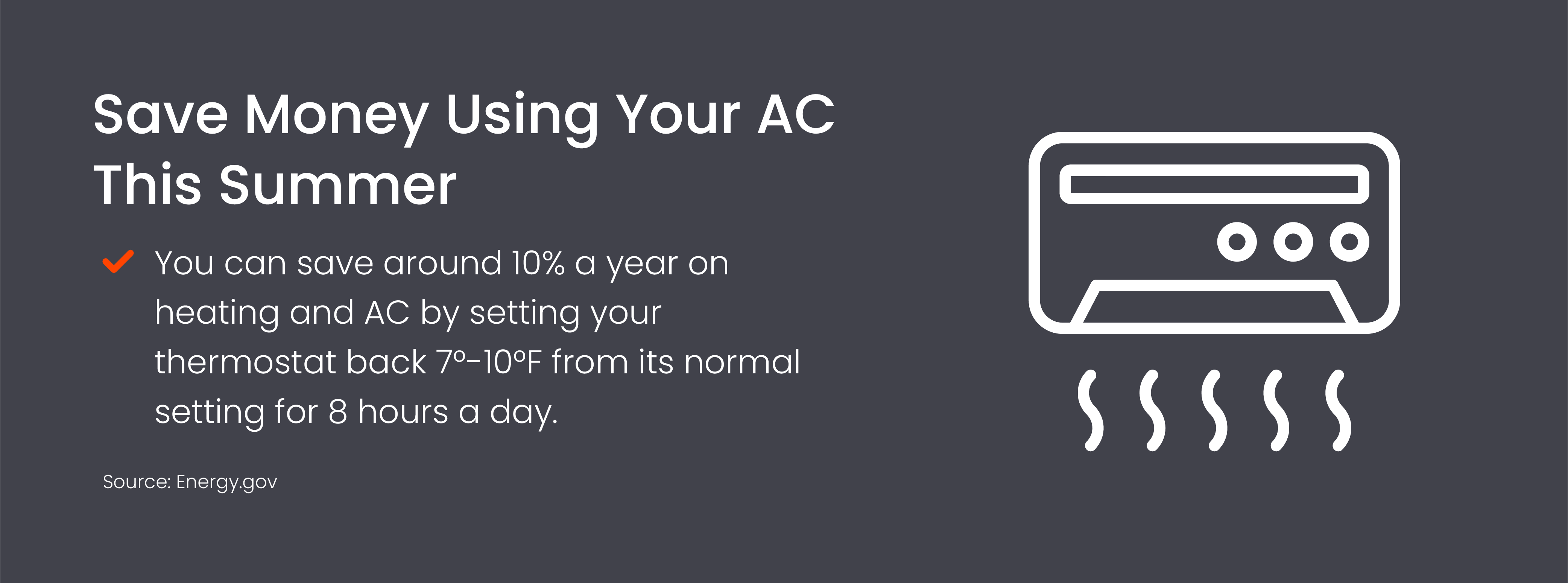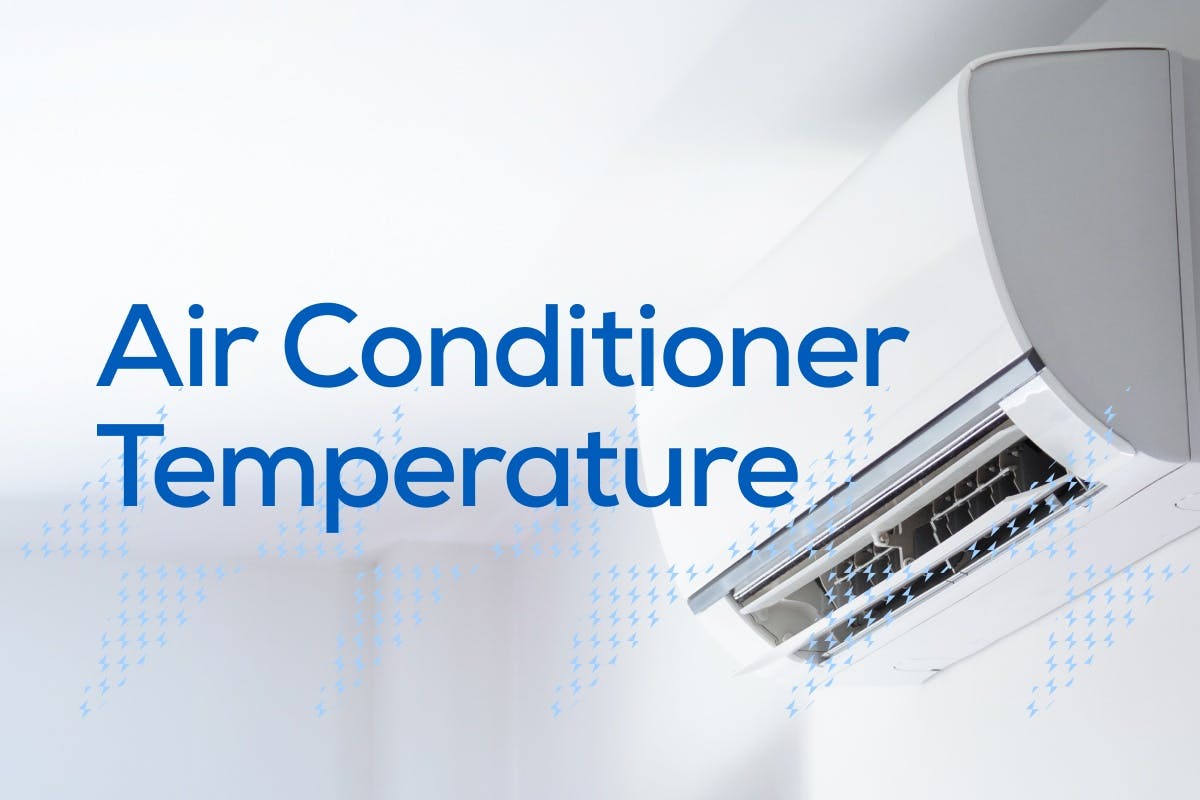What Temperature To Set Ac To Save Money

The age-old question: what temperature should I set my AC to save money? It's a question that resonates with homeowners, renters, and even seasoned HVAC professionals. The answer, however, is more nuanced than a simple number. It involves understanding energy consumption, comfort levels, regional climates, and even the impact of different HVAC system types. As an HVAC professional or aspiring technician, understanding these factors is crucial for providing informed advice to your clients and optimizing energy efficiency in any building.
Understanding the Energy-Saving Sweet Spot
While individual preferences vary, energy experts and organizations like the U.S. Department of Energy (DOE) generally recommend setting your thermostat to 78°F (26°C) when you're at home and need cooling. This temperature balances comfort and energy savings. When you’re away, raising the temperature to 85°F (29°C) can significantly reduce energy consumption. These aren't just arbitrary numbers; they're based on extensive research and analysis of energy usage patterns.
Consider this: for every degree you raise the thermostat above your typical setting, you can save approximately 1% to 3% on your cooling costs. This might seem small, but it adds up over the course of a summer, especially in regions with long cooling seasons.
Example: Let's say a homeowner typically sets their AC to 72°F. By raising it to 78°F when they're home, they could potentially save between 6% and 18% on their cooling bill. If their average monthly cooling bill is $150, that translates to savings of $9 to $27 per month.
The Role of Smart Thermostats
Smart thermostats are revolutionizing energy management in homes and businesses. These devices learn your habits and automatically adjust the temperature based on your schedule, occupancy, and even weather forecasts. They can be programmed to pre-cool your home before you arrive, or to gradually increase the temperature overnight. The U.S. EPA estimates that Energy Star certified smart thermostats can save homeowners an average of 8% on their annual energy bills. For HVAC technicians, mastering the installation, programming, and troubleshooting of smart thermostats is becoming an increasingly valuable skill.
Beyond the Thermostat: A Holistic Approach to Energy Efficiency
Setting the right temperature is just one piece of the puzzle. A truly energy-efficient HVAC system requires a holistic approach that considers factors such as:
- Insulation: Proper insulation in walls, ceilings, and floors prevents heat gain in the summer and heat loss in the winter, reducing the workload on your HVAC system.
- Air Sealing: Sealing air leaks around windows, doors, and other openings prevents conditioned air from escaping and unconditioned air from entering.
- Ductwork: Leaky or poorly insulated ductwork can waste significant energy. HVAC technicians often perform duct leakage testing and sealing to improve efficiency.
- HVAC System Maintenance: Regular maintenance, including filter changes, coil cleaning, and system inspections, ensures that your HVAC system is running efficiently.
- Window Treatments: Using blinds, curtains, or solar films can help to block sunlight and reduce heat gain.
The Importance of HVAC Certifications
For HVAC professionals, certifications are essential for demonstrating expertise and increasing earning potential. Some key certifications include:
- NATE (North American Technician Excellence): NATE certification is widely recognized as the gold standard for HVAC technicians. It validates your knowledge and skills in areas such as installation, service, and repair. The median salary for NATE-certified technicians is typically higher than those without certification.
- EPA 608 Certification: This certification is required by the Environmental Protection Agency (EPA) for technicians who handle refrigerants. It ensures that technicians are properly trained in refrigerant handling and recovery to protect the environment.
- HVAC Excellence: This organization offers a range of certifications for HVAC educators and technicians, focusing on technical proficiency and industry best practices.
Pursuing these certifications not only enhances your skills but also makes you more marketable to employers and increases your value in the job market. According to the Bureau of Labor Statistics, the median annual wage for HVAC mechanics and installers was $59,620 in May 2023. However, salaries can vary significantly based on experience, location, and certifications. Top earners, especially those with specialized skills and certifications, can earn well over $80,000 per year.
HVAC Industry Trends and Job Outlook
The HVAC industry is experiencing strong growth, driven by factors such as increasing demand for energy-efficient systems, stricter building codes, and a growing focus on indoor air quality. The Bureau of Labor Statistics projects that employment of HVAC mechanics and installers will grow 6% from 2022 to 2032, about as fast as the average for all occupations. This growth is creating numerous opportunities for skilled technicians.
Career Paths in HVAC: The HVAC field offers a variety of career paths, including:
- HVAC Technician: Install, maintain, and repair HVAC systems in residential, commercial, and industrial settings.
- HVAC Installer: Focus on the installation of new HVAC systems.
- HVAC Service Technician: Specialize in the maintenance and repair of existing HVAC systems.
- HVAC Sales Engineer: Design and sell HVAC systems to businesses and homeowners.
- HVAC Project Manager: Oversee the installation and maintenance of HVAC systems for large-scale projects.
Example: Sarah started her career as an HVAC apprentice after completing a vocational training program. She earned her NATE certification within a few years and quickly advanced to become a lead technician. She now manages a team of technicians and oversees complex HVAC installations for commercial clients. Her salary has more than doubled since she started her career.
Adapting to Regional Climates and Building Types
The optimal AC temperature setting can vary depending on the climate and the type of building. In hot, humid climates, it may be necessary to set the thermostat slightly lower to maintain comfortable humidity levels. Similarly, older buildings with poor insulation may require lower temperature settings compared to newer, more energy-efficient buildings.
For example, a homeowner in Arizona may need to set their thermostat to 76°F to achieve the same level of comfort as a homeowner in Maine who sets their thermostat to 78°F. The key is to find a balance between comfort and energy savings that works for your specific situation.
Key Takeaway: When advising clients, don't just focus on the numbers. Understand their individual needs, assess their building's characteristics, and consider the local climate. Offer a comprehensive solution that addresses both comfort and energy efficiency.
The Future of HVAC: Innovation and Sustainability
The HVAC industry is constantly evolving, with new technologies and innovations emerging all the time. Some of the key trends shaping the future of HVAC include:
- Smart HVAC Systems: Integration of sensors, data analytics, and artificial intelligence to optimize energy efficiency and improve system performance.
- Geothermal Heat Pumps: Utilizing the earth's natural heat to provide heating and cooling, offering significant energy savings.
- Variable Refrigerant Flow (VRF) Systems: Allowing for precise temperature control in different zones of a building, reducing energy waste.
- Sustainable Refrigerants: Phasing out ozone-depleting refrigerants and adopting more environmentally friendly alternatives.
As an HVAC professional, staying up-to-date with these trends is crucial for remaining competitive and providing your clients with the best possible solutions.
In conclusion, setting the right AC temperature to save money is a complex equation that requires understanding energy consumption, comfort levels, regional climates, and building characteristics. By combining best practices with a holistic approach and staying current with industry trends, HVAC professionals can play a vital role in helping homeowners and businesses optimize their energy efficiency and reduce their environmental impact. Invest in your education, pursue certifications, and embrace innovation to thrive in this dynamic and rewarding field. The future of HVAC is bright, and the opportunities are endless for those who are willing to learn and adapt.










